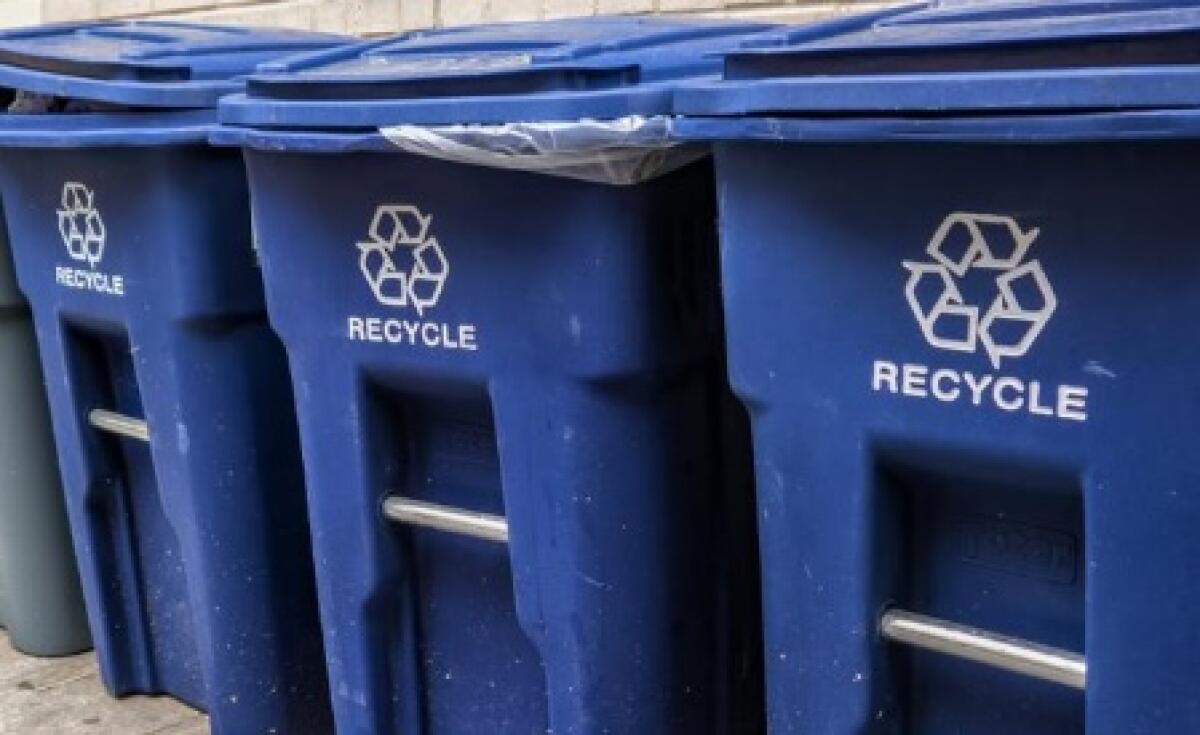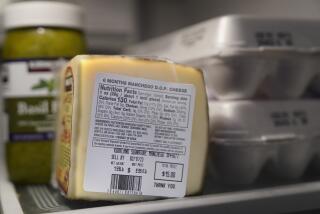Editorial: It’s time to stop misleading consumers about the sad state of recycling

- Share via
You’ve surely seen it before on a laundry detergent bottle label, printed on a ready-made salad bag or stamped onto the container of a thousand other products lining the shelves of grocery and retail stores: A symbol with three “chasing” arrows that form a triangle. It may be green or black. It might have a number between 1 and 7 inside the triangle, which corresponds to the type of plastic resin used to construct it, or have a suggestion about how to recycle.
To the consumer, this symbol conveys the message that this item is recyclable and, for the sake of the planet, ought to be treated accordingly and not dumped into the trash bin. But to environmentalists and waste reduction advocates the symbol is, in many cases, a half-truth used by manufacturers to “greenwash” their products.
The truth is that many, if not most, of the plastic products bearing the symbol aren’t being recycled no matter if they are placed in recycling bins. In fact, less than 10% of all the single-use plastic ever made has been recycled, and that is unlikely to change without serious intervention.
That’s the thinking behind Senate Bill 343 by Sen. Ben Allen (D-Santa Monica). The bill would prohibit manufacturers from using a “chasing arrows” symbol on their products starting in 2024 unless they can prove it is not just potentially recyclable but is actually getting recycled in any meaningful way in California. It was passed by the Legislature and is now awaiting action by Gov. Gavin Newsom, along with a package of other sensible, if incremental, proposals to improve recycling.
The symbol was created in 1988 by the plastics industry with the good intention of conveying helpful information to consumers about what items could be recycled. But it went off the rails pretty quickly when package makers started plastering the symbol on just about anything, whether it could be recycled or not. The result is that consumers are optimistically filling up recycling bins with things that have no hope of being recycled, and making it difficult and more costly for recycling facilities to sort.
Unsurprisingly, plastic manufacturers opposed the bill, as they have done with all of the meaningful plastic-trash reduction proposals in recent years. They argue that the change will confuse consumers, though it is difficult to imagine that being truthful will lead to more confusion.
It’s hard to say whether setting new rules for use of the recycling symbol will change consumer behavior. How many people even look at labels for information other than ingredients, calories or directions for use? That’s OK. The main objective of the bill is to change behavior among package makers and nudge them toward using materials that have a high recycling rate, such as glass, paper or PET or HDPE plastic (No. 1 and No. 2 in the chasing arrows symbol), and away from those that don’t have a viable recycling market or can’t be recycled because they are constructed with two or more types of material (think paper cartons lined with plastic).
Ultimately, this is not a transformational reform on par with another Allen bill, SB 54, that would have phased out the sale of consumer products within the state if they came in nonrecyclable plastic packaging. That effort has failed to pass in the Legislature for three years now. But cracking down on the “chasing arrows” symbol is a smart step in the right direction to stop misleading consumers about the sorry state of recycling.
More to Read
A cure for the common opinion
Get thought-provoking perspectives with our weekly newsletter.
You may occasionally receive promotional content from the Los Angeles Times.










